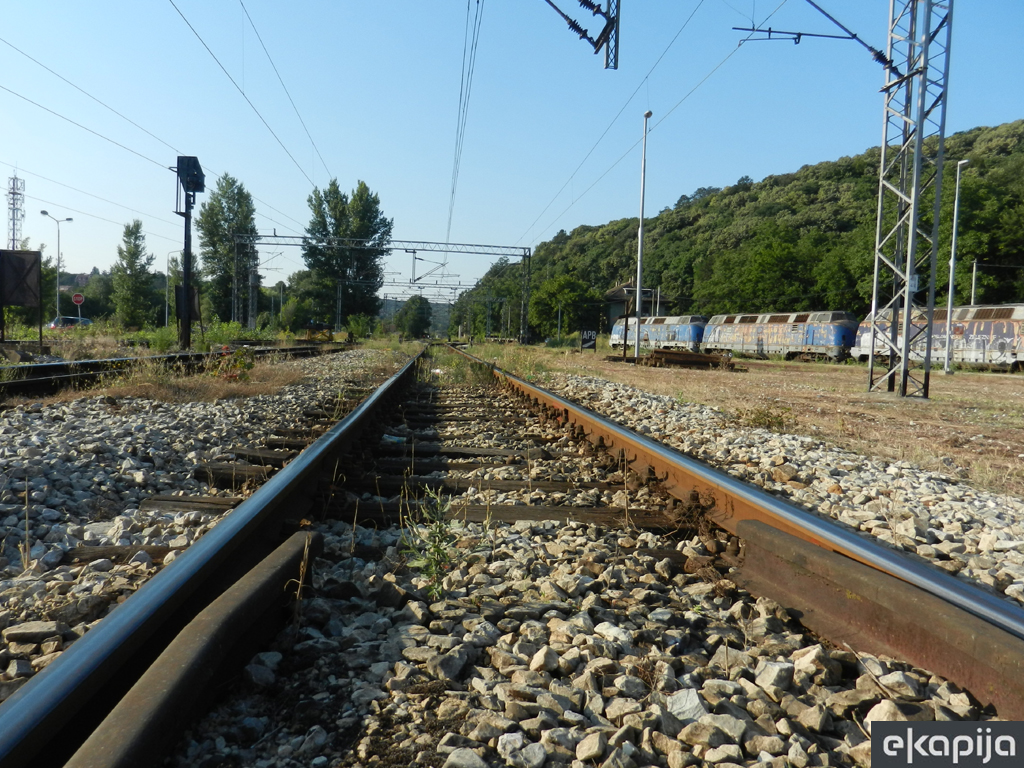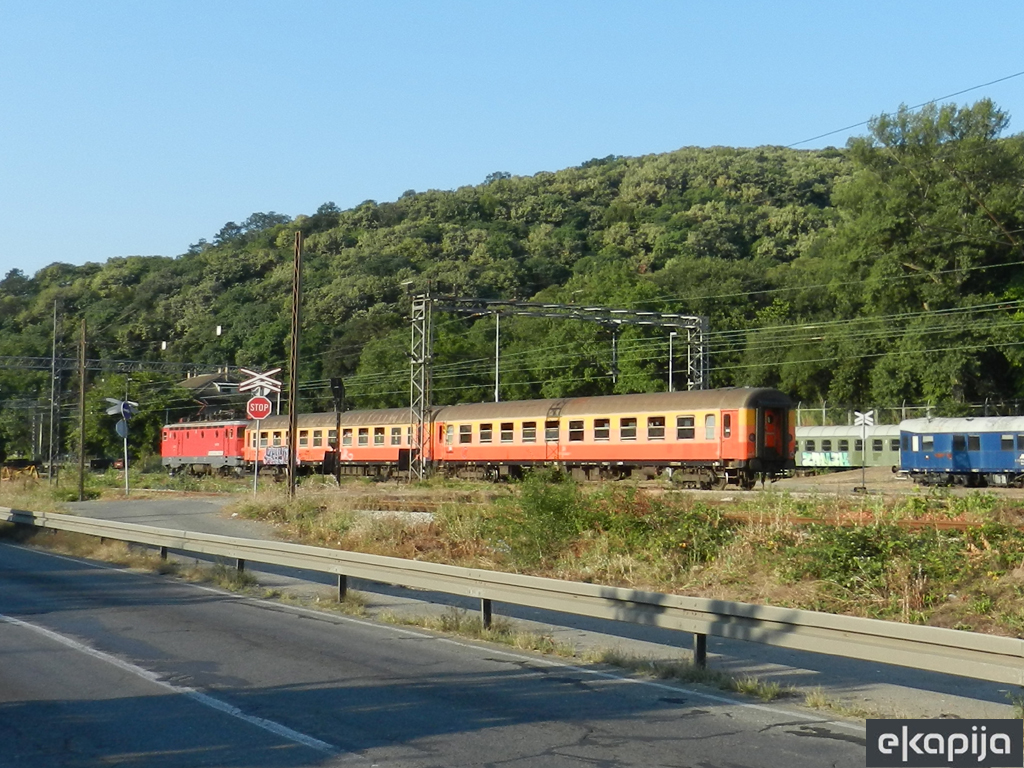Fast tracks of Serbia - Trains rush 30 kilometers per hour and next year they might reach half of TGV speed
 Monday, 12.08.2013.
Monday, 12.08.2013.
 06:39
06:39

Information that the Russian train which was bought by our Zeleznice cannot go slower than 50 kmh while on some parts of our tracks trains cannot go faster than 30 was amusing to many people, especially to those who have been familiar with the project of the "fast tracks of Serbia"
Train delays are not a new thing for passengers, they are even surprised when they arrive on time.
Despite the fact that the average age of Serbian tracks is 42 years and majority of the pool is almost three decades old, Zeleznice Srbije have a problem with the placement of the approved loans. Sanctions for that is the payment of penalties to creditors. The fact that the situation is alarming is proved by the facts that only 17 % of the international sources, i.e. out of 375 mil euros, only 66 have been spent and that the penalties totaled EUR 3,5 mil.
Constant turning from the track of promise
The idea of the fast tracks of Serbia is 22 years old and was suggested by Dragan Zelenovic, former Republic Prime Minister.

Milutin Mrkonjic, who as the director of CIP participated in the initiation of the idea of the fast tracks of Serbia pointed out that after democratic changes, the government was to blame for the bad railway traffic, not the fact that Serbia does not have money. Former ideas have been revived but have not been implemented.
Milanko Sarancic, former General Manager of Zeleznice Srbije said that by 2015, Serbia could have fast tracks witha maximum speed of 160 kilometers per hour. Velimir Ilic also spoke about it when, before that, as the Minister for Infrastructure promised that for a start he would rehabilitate all railway stations in Serbia.
Since Milutin Mrkonjic will not head the Ministry of Traffic after the reconstruction of Government, implementation of the fast tracks of Serbia will wait for the new minister.
New suite of tracks at Corridor 10
Zeleznice Srbije announced that extensive works on the Bar tracks could start next spring and that it would take three years to complete them.The company says that EUR 250 mil will be invested from the Russian loan for there construction of more than 200 kilometers of the Bar track through Serbia and that “development of designs has just started”.

Zeleznice announced beginning of works on the first project funded by the Russian state loan in mid October this year – modernization of the track at the Pancevo bridge in Belgrade to the main station in Pancevi totaling EUR 55 mil.
Apart from that, overhaul of the section at the Corridor 10 from Ruma to Golubinci (18 km), from Sopot Kosmajski to Kovacevac (18,4 km) and from Mala Krsna to Velika Plana (29,5 km).
Concession of railway in Serbia
According to the project of the fast tracks of Serbia, it would take less than 2 hours from Belgrade to Budapest and three hours to Vienna. Only construction of the overpass above the tracks at Indjija.
The construction of the railway at the Corridor 10, between Belgrade and Budapest, 350 kilometers long, would cost between a billion and a half and two billion euors.
The Ministry of Traffic announced in early March that the Chinese are interested in the project implementation which would be funded from the loan from that country but they are also interested in other ways of participation, e.g. for concession construction.
It takes now more than eight hours from Belgrade to Budapest now,with an average commercial speed of 43 km per hour.
Fast tracks of Serbia of 160 km/h
For the sections at the Corridor 10, a speed of 160 kilometers per hour has been planned after reconstruction. However, Serbian trains, even if we wanted, cannot go faster.
Russian trains were bought in Serbia which due to inadequacy oftracks, travel 30 kilometers per hour although they should not go less than 50.
Zeleznice Srbije signed the contract with the Swiss Stadler Bussnang on purchase of 21 new electro motor passenger trains which could develop a speed of 160 kilometers per hour which should arrive in September next year until August 2015.
Fast tracks of France
One of the fastest trains, known as the train without a driver, for more than 30 years, has been produced by the French Alstom. The fast TGV train was put into operation at the Paris-Lion track in 1981 and since than it has been operating through whole of the France.
A group of 6 journalist from Serbia who in June went on a study journey to France, organized by the French Embassy in Belgrade has the opportunity to visit the Alstoma plant in the French city, La Rochel.
We felt the TGV duplex comfort, i.e. a floor train, at the Paris-Lion and Paris-La Rochel which are some 400 k far, we reached the destination for a bit more than 2 hours. Comparing to Serbia, we would need four times more time for the same destination.
TGV is famous for speed records. As we found out, the latest generation of trains with very high speeds AVG travels up to 360 km/h, while speeds tested are the ones of 574,8 km/h, which is enabled by special tracks,strong engines, low weight and inner traffic signalization. Last year, Italy listed the train as commercial traffic at the Milan-Rome-Napoli.
Apart from that, journalists from Serbia also found out details of the TGV route Tours- Bordeaux. It is a priority project part of 2000 km of new tracks and high speed which was initiated by France. Tours- Bordeaux will be the first high speed line based on the concession model in France.
The LISEA Consortium comprising VINCI, Caisse des Depots and AXA Private Equity won tender for this Greenfield project in 2007.
- The construction started in 2011. We are building a route of 650 kilometers through public-private-partnership. The project totals EUR 7,8 billion, 3,8 billion of which will be set aside by LISEA, 3 billion by the cities it runs through and one billion from the company managing railways of the French RFF. The route will have 240 bridges, more than 91.000 tons of steel will be used - Alexis de Pommerol, the Technical Manager at LISEA, said upon the visit of the journalists to this company.
The Technical Manager of LISEA mentioned that Railways of Spainare potential future client because this route can easily be connected with the Spanish rails.
When in 2017 traffic starts, it will take 2 hours and 5 minutes to get from Paris to Bordeaux by new infrastructure. Therefore, the question is whether it is profitable to travel by plane when on long tours over France.
Suzana Obradovic
 Železnice Srbije a.d. Beograd
Železnice Srbije a.d. Beograd
 Ministarstvo građevinarstva, saobraćaja i infrastrukture Republike Srbije
Ministarstvo građevinarstva, saobraćaja i infrastrukture Republike Srbije
 Alstom-Transport SA, Saint Quen, France
Alstom-Transport SA, Saint Quen, France
 Ambasada Francuske Ekonomsko odeljenje - Beograd
Ambasada Francuske Ekonomsko odeljenje - Beograd


 Izdanje Srbija
Izdanje Srbija Serbische Ausgabe
Serbische Ausgabe Izdanje BiH
Izdanje BiH Izdanje Crna Gora
Izdanje Crna Gora


 News
News






